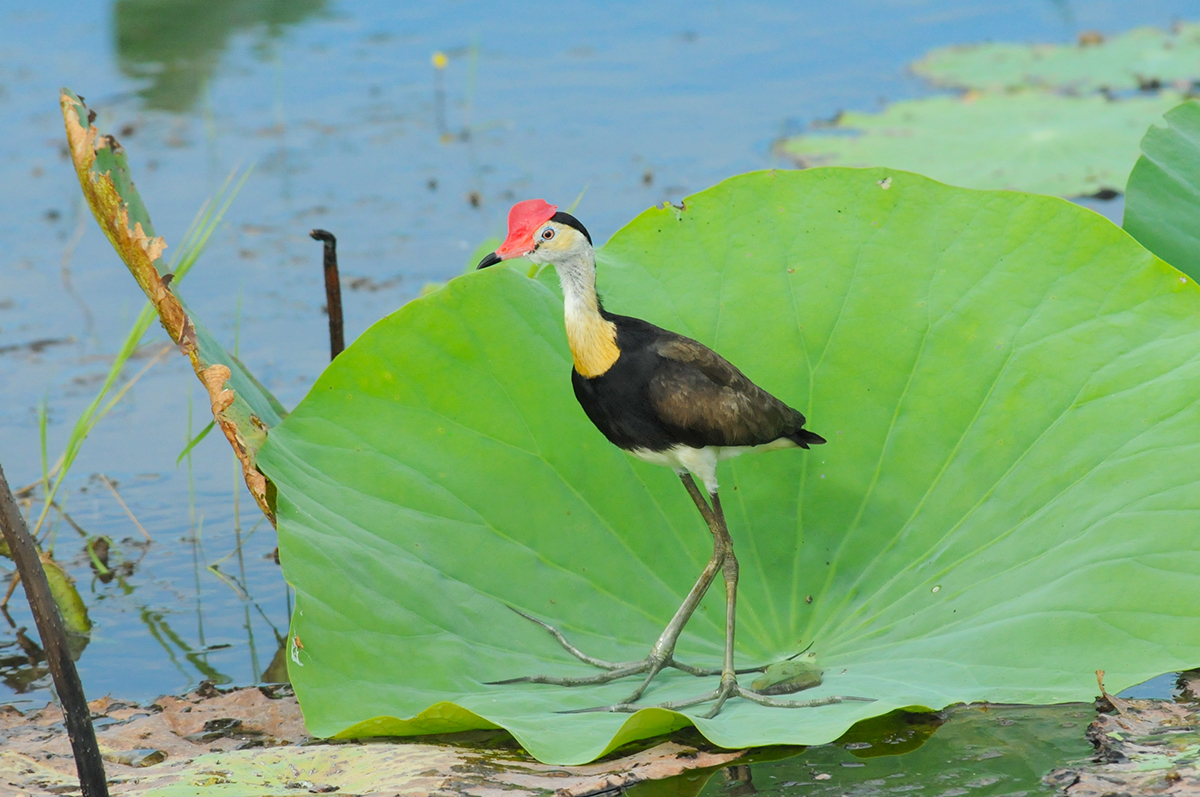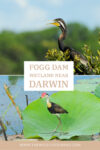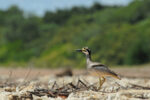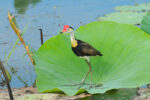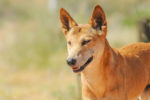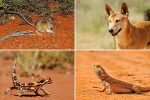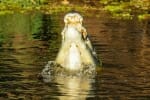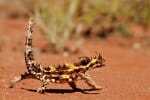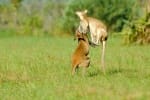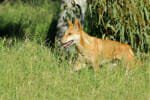Fogg Dam Conservation Reserve is probably the best place to experience a tropical wetland and see an incredible variety of birds near Darwin. It is also one of the most accessible wetlands year-round, within easy reach of the city.
Located about 70 kilometres east of Darwin along the Arnhem Highway, the dam was created to turn the surrounding area into rice paddies. The project was later abandoned, and over time, the area has reverted to a natural wetland that provides much-needed refuge for an astonishing variety of wildlife.
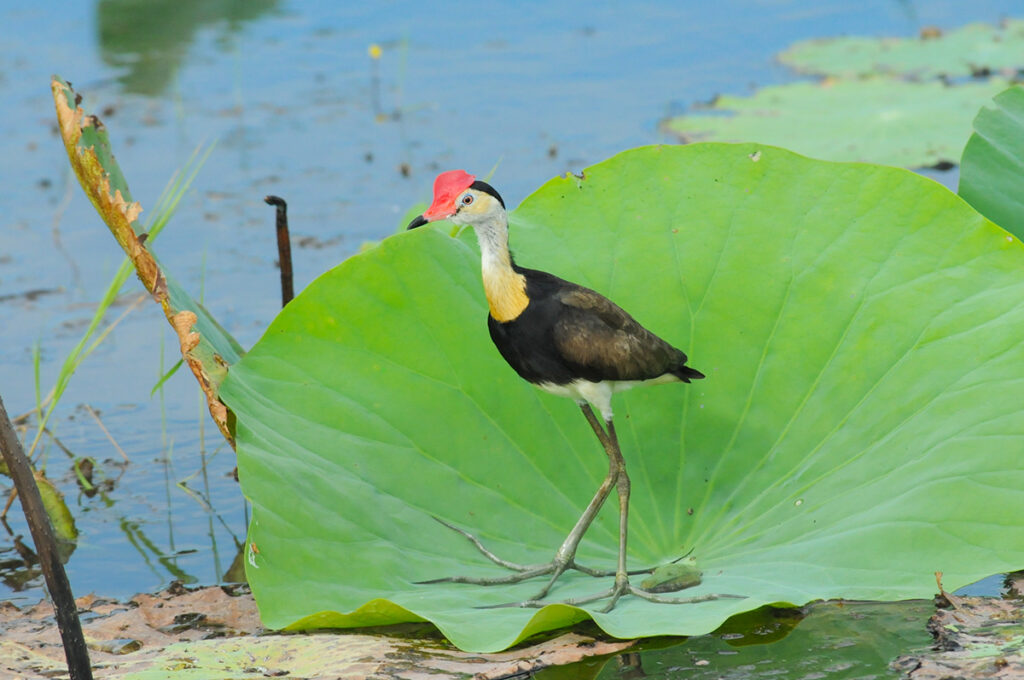
At least 233 species of birds have been recorded at Fogg Dam, including Jabiru, jacana, pygmy geese, brolga, and several species of kingfishers and raptors.
Fogg Dam is also famous for having one of the highest ratios of predator biomass (water pythons) to prey (dusky rats). The interactions between the pythons and the rats at Fogg Dam are defined by a kind of migration that doesn’t exist anywhere else on Earth.
Birds of Fogg Dam
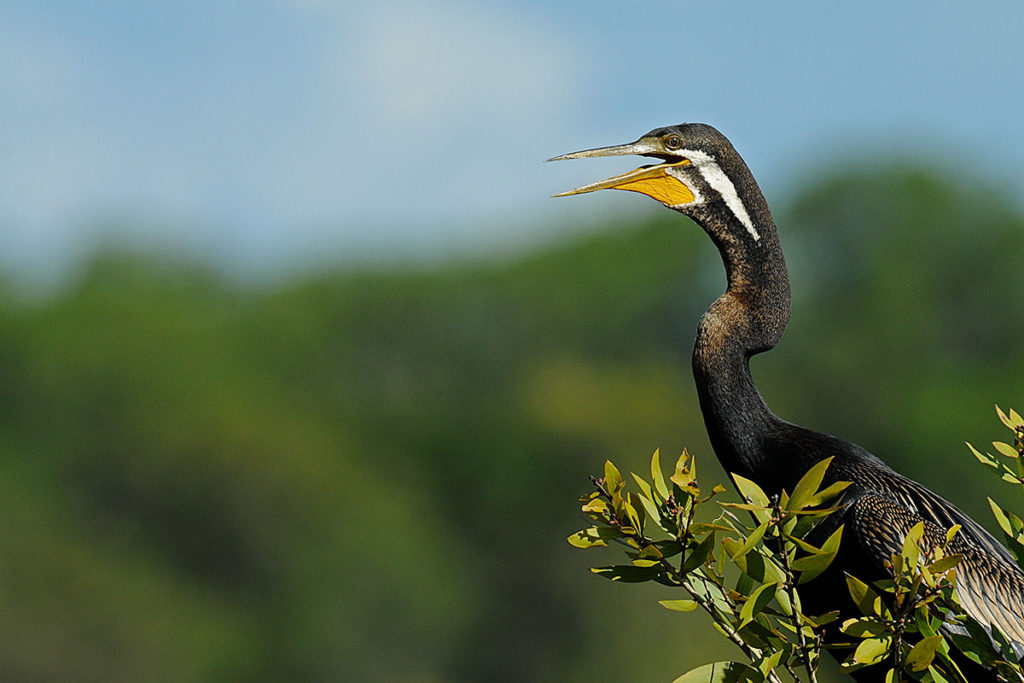
By the time we visited Fogg Dam, we were already spoiled by the abundant wildlife-watching opportunities that the Northern Territory has to offer, but what we saw at the dam was a true wildlife spectacle.
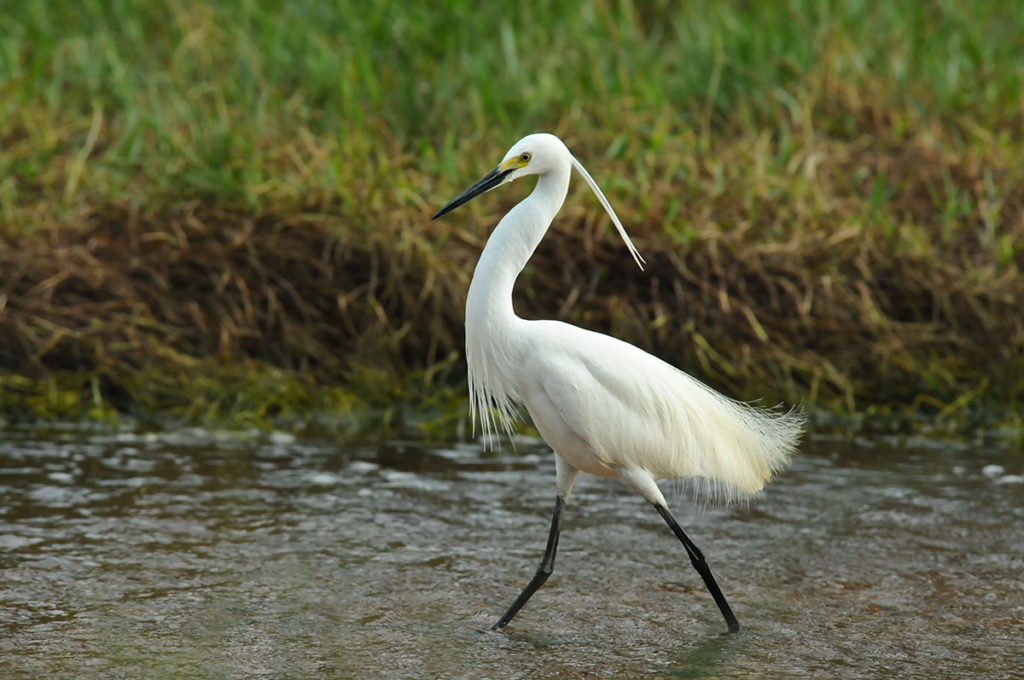
Dozens of Little, Intermediate and Great egrets, Pied herons, Glossy ibis, Royal spoonbill, Little black and Little pied cormorants, Raja shell ducks, Comb-crested jacanas, Australian darters and Jabiru storks were feeding in the shallows. Egrets and herons were still spotting their impressive breeding plumage.
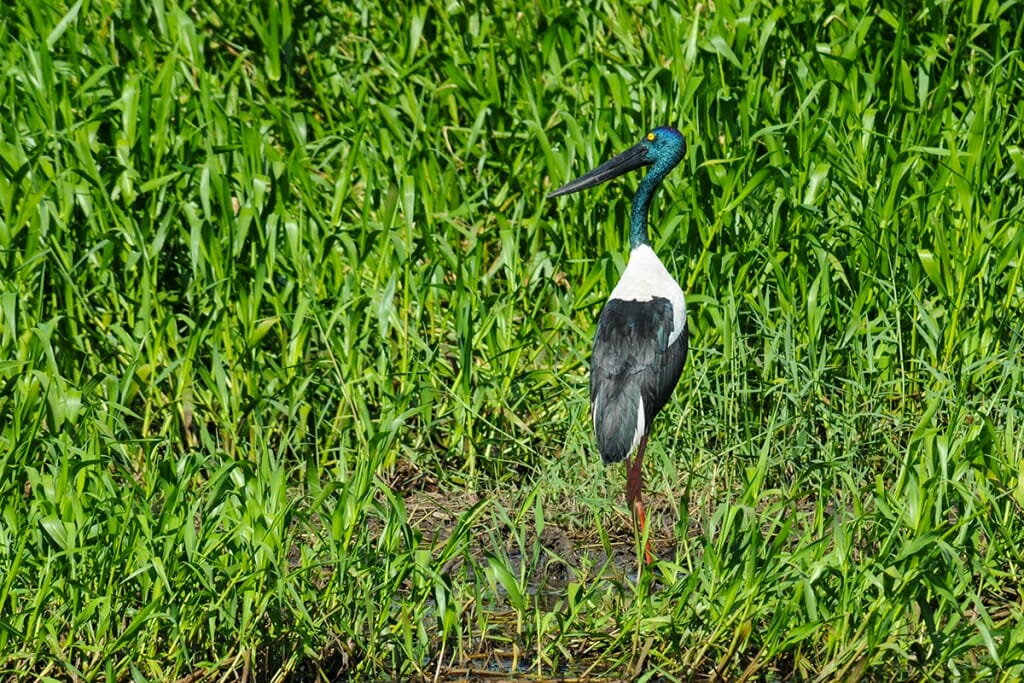
We happened to be visiting during the best time for observing the birds, which is considered to be from the end of March until the start of October.
With so many birds feeding within a small area, the tensions were often high, and territorial disputes frequently erupted. Egrets were the most feisty feeders and mainly quarrelled with their conspecifics. Some of the conflicts required the help of an independent referee, such as a Pied heron.
Most birds, however, played together nicely – there seemed to be a lot of food to go around.
There are several walking trails at the reserve that take you into different habitat types. One of the reasons for the park’s extraordinary biodiversity is that its area contains six different habitat types.
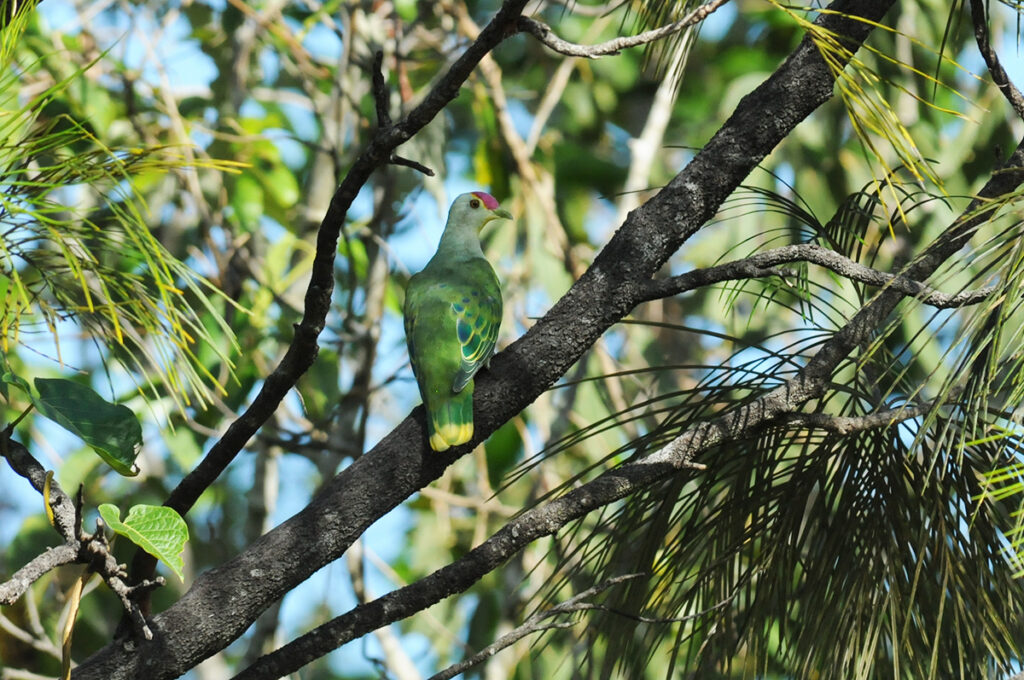
We are not twitchers by any stretch of the imagination, but we enjoy seeing the birds when they are around. We took the Woodlands to Waterlilies trail (more on walking trails below), and without trying too hard, we saw quite a few woodland species around the forest edges, including yellow orioles, rose-crowned fruit dove, azure kingfisher, rainbow bee-eater, red-winged parrot, rufus whistler, mistletoebird, lemon-belied flycatcher and varied thriller among others.
We also picked up several Gilbert’s dragons and a Green tree snake on that walk.
Fogg Dam at Night
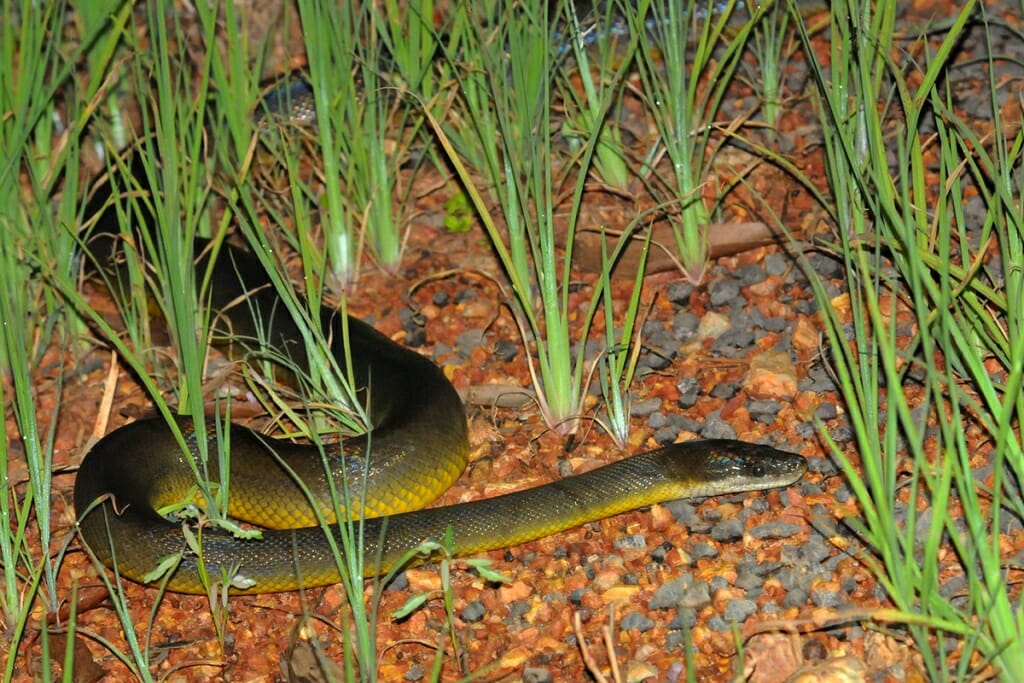
Once the darkness falls, Fogg Dam metamorphoses into a different world, dominated by snakes and rodents, namely Water pythons, Olive pythons and dusky rats. There are also the occasional magnificent Northern Death Adders – one of Australia’s most venomous snakes.
Fogg Dam is rumoured to have one of the highest biomass of predator (water pythons) to prey (dusky rats) ratios in the world. The dusky rats were difficult to see; we hadn’t seen any in the three nights we spent spotlighting at the dam. The pythons, on the other hand, were difficult to avoid, as they reign unchallenged over Fogg Dam’s night scene.
During the wet season, Saltwater crocodiles move into the Fogg Dam area from the Adelaide River. Their eye-shine is so big that it discourages you from leaving the safety of your vehicle on the dam wall.
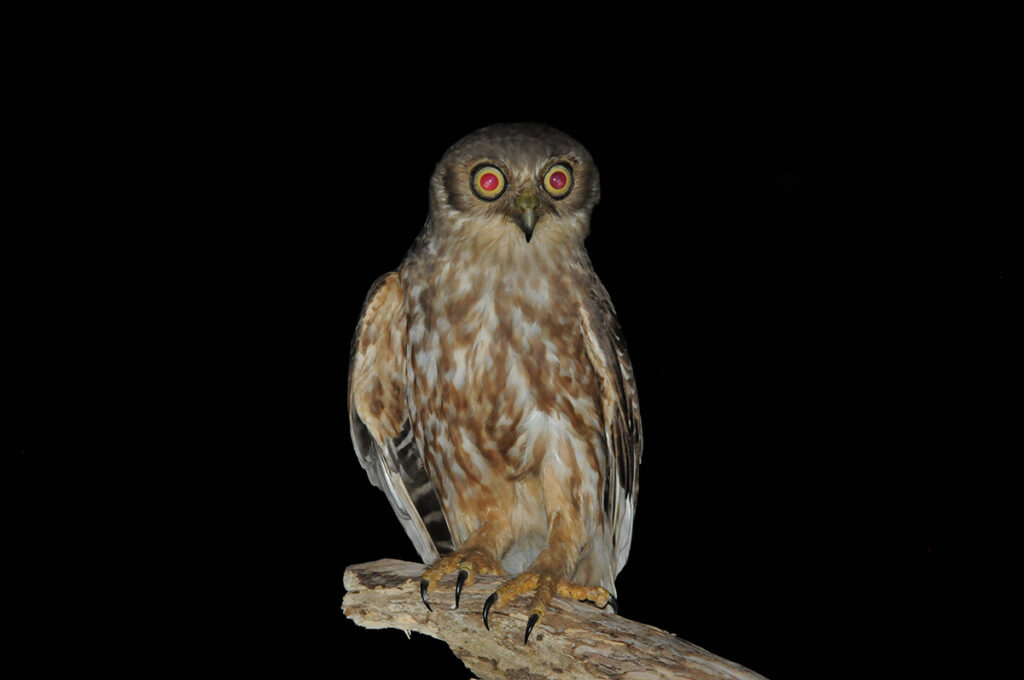
It always terrifies me to remember that the visible part of the submerged crocodile – its snout and the top of its head are only one-eighth of the croc’s full size. The glowing red eyes we were seeing were disturbingly large and far apart.
The bird scene of the night is dominated by Barking owls and Nankeen night herons, with a few occasional Large-tailed nightjars and Tawny frogmouths. One night, we also spotted a Barn owl.
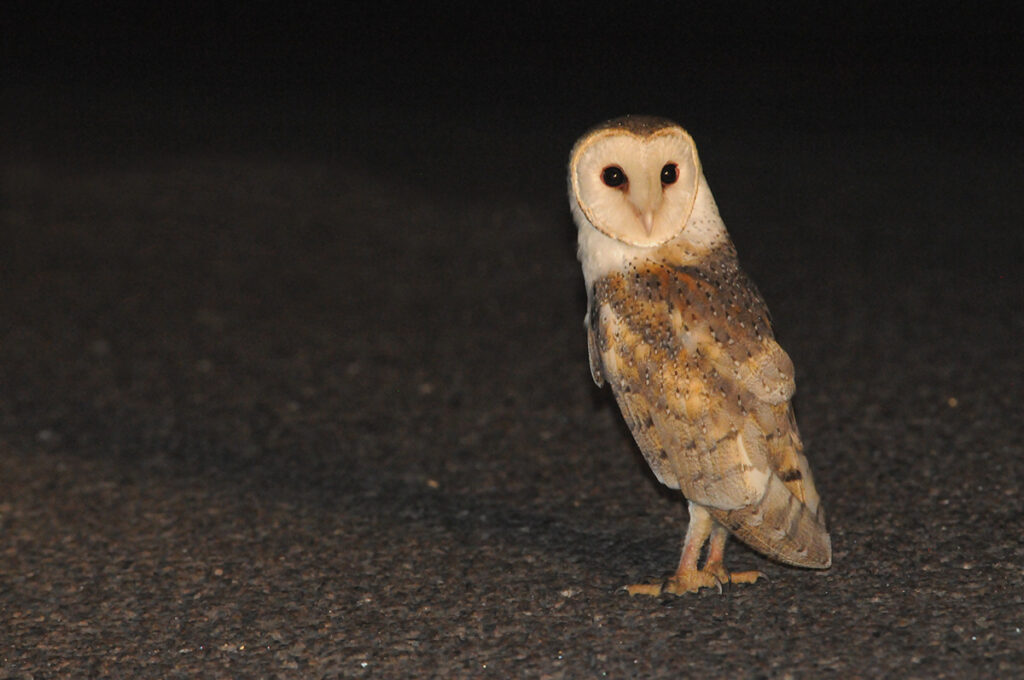
We also came across a Slaty-grey snake slithering off the road.
Mammals proved more difficult to find. We did spotlight a dingo and a Northern brush-tail possum, but that was about it. The only Northern Brown Bandicoot we encountered was a dead animal on the road.
Keep in mind that the marshy habitat is a haven for mosquitoes. Bring your (non-toxic) insect spray for daytime visits. At night, I highly recommend wearing long sleeves and long pants even if you don’t plan to leave the car.
Fogg Dam Tours from Darwin
If you don’t have a car or don’t want to drive, you can visit Fogg Dam on an organised tour from Darwin. There are two main options: A full-day tour that takes place in Berry Springs, Jumping Croc Cruise and Fogg Dam. And an evening tour of Fogg Dam and Humpty Doo Hotel.
Walking Trails at Fogg Dam
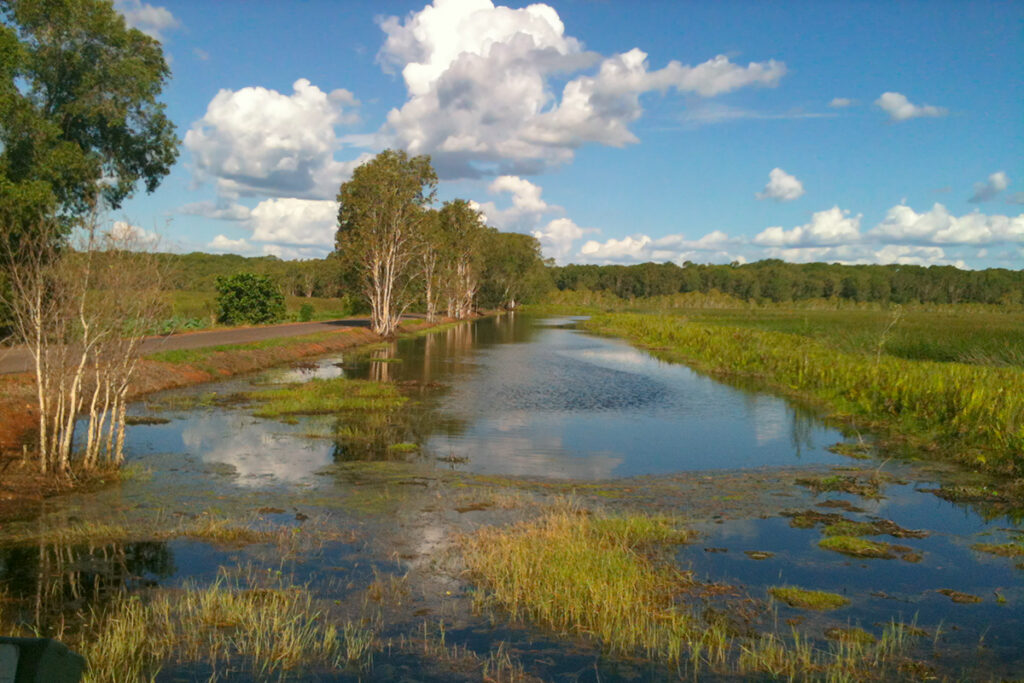
There are a couple of walking trails at Fogg Dam. One travels through the rainforest, and the other skirts the dam along a boardwalk.
Monsoon Forest Walk winds through various habitats, including monsoon and paperbark forests, and then onto the floodplains. There are signs along the way. The trail is a 4.4 km return walk that takes about 1.5 hrs to complete.
Woodlands to Waterlilies Walk leads you through forests that fringe the floodplains. A boardwalk takes you onto the Dam. There are signs and lookouts along the way. This walk is a 2.2 km return track that takes about 45 minutes to complete.
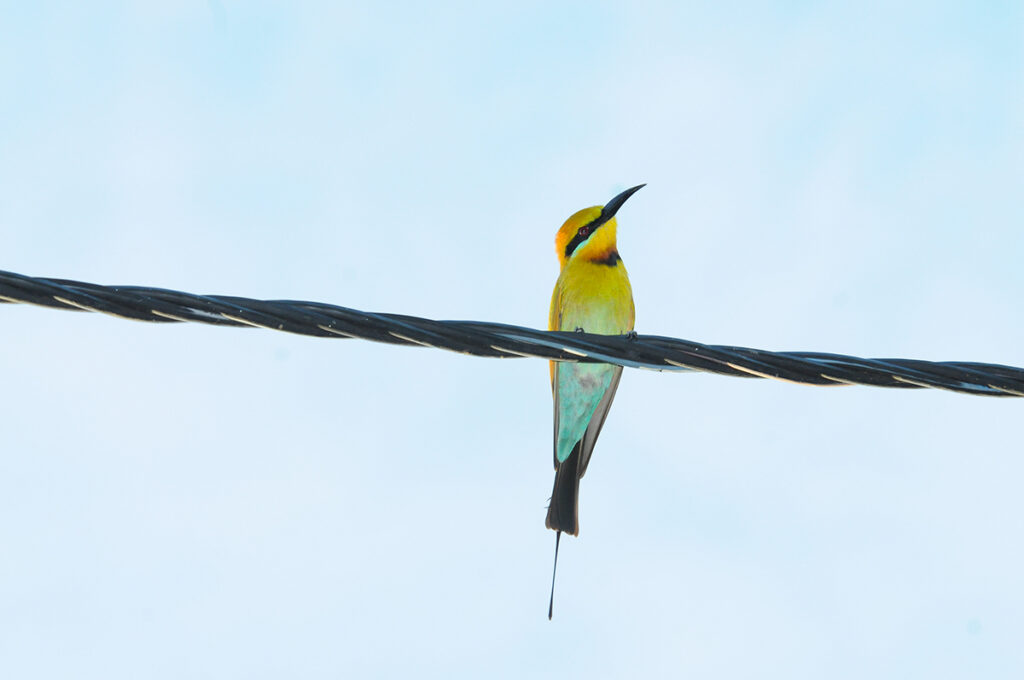
Dam Wall: you can either drive along the dam wall to the picnic area or walk along it. I recommend walking the dam wall and spending some time in the bird-viewing platforms along the walk to see an incredible abundance of birds.
Beyond the walks and the abundant wildlife, Fogg Dam is a very peaceful place. Sit still for a few minutes, and some critter will come to check you out. Early mornings are the best at the dam, and nighttime is absolutely amazing.
There aren’t many facilities at Fogg Dam. There are public bathrooms and a picnic area, and that’s about it.
More on Exploring Northern Territory
- Karlu Karlu / Devils Marbles Conservation Reserve
- Things to Do in Darwin and Beyond for Nature Enthusiasts
- Fogg Dam Conservation Reserve – An Underrated Gem Near Darwin
- Adelaide to Darwin Road Trip: Ultimate Wildlife Safari in the Australian Outback
- Spotting Australian Desert Animals in the Simpson Desert
- Are Kakadu animals out to get you? Wildlife watching in Kakadu NP
- Uluru animals – Weird and wonderful creatures you can spot at Uluru
- Mary River: a Wildlife Hotspot in Northern Australia
- The stunning West MacDonnell Ranges – Northern Territory Road trip

